Berlin, Gemäldegalerie

St. Jerome, Albrecht Altdorfer

Der Hoffart, Albrecht Altdorfer
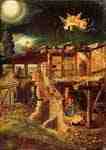
Holy Night ( Nativity), Albrecht Altdorfer
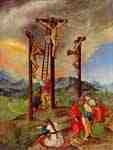
The Crucifixion, Albrecht Altdorfer

Landscape with family of Satyrs, Albrecht Altdorfer
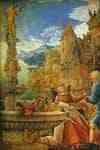
Rest on the Flight, Albrecht Altdorfer
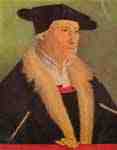
Portrait of the cosmographer Sebastian Munzer, Christoph Amberger
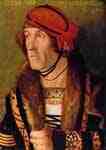
Portrait of Count Ludwig zu Löwenstein, Hans Baldung Grien

Lamentation of Christ, Hans Baldung Grien

Three kings altar : St. George and St. Agnes, Hans Baldung Grien
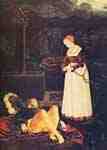
Pyramus and Thisbe, Hans Baldung Grien

Paternal Admonition, Gerard ter Borch the Younger
 St. John the Evangelist on Patmos, Hieronymus Bosch
St. John the Evangelist on Patmos, Hieronymus Bosch
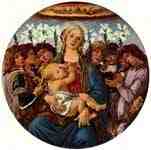 Madonna with eight singing angels, Sandro Botticelli
Madonna with eight singing angels, Sandro Botticelli
 Portrait of Giuliano de ' Medici, Sandro Botticelli
Portrait of Giuliano de ' Medici, Sandro Botticelli
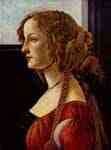 Portrait of Simonetta Vespucci, Sandro Botticelli
Portrait of Simonetta Vespucci, Sandro Botticelli
 St. Sebastian, Sandro Botticelli
St. Sebastian, Sandro Botticelli

Bardi Altar, Sandro Botticelli
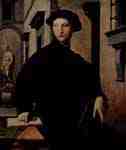 Portrait of Ugolino Martelli, Bronzino
Portrait of Ugolino Martelli, Bronzino
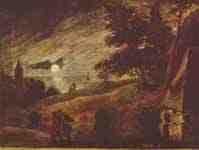 Moonscape, Adriaen Brouwer
Moonscape, Adriaen Brouwer
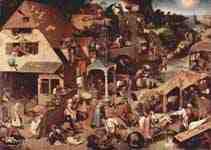 The Dutch Proverbs, Pieter Bruegel the elder
The Dutch Proverbs, Pieter Bruegel the elder
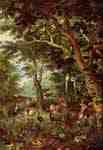
The Paradise, Jan Brueghel the Elder
 The Crucifixion, Robert Campin
The Crucifixion, Robert Campin

Coastal landscape with two fighting men, Cima da Conegliano
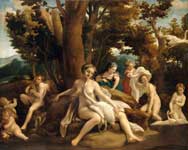 Leda and the Swan , Correggio
Leda and the Swan , Correggio
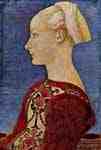 Portrait of an elegant young woman, fragment, Domenico Veneziano
Portrait of an elegant young woman, fragment, Domenico Veneziano
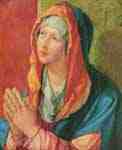 Praying Mary, Albrecht Dürer
Praying Mary, Albrecht Dürer
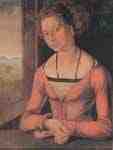 The Fürlegerin with braided hair, Albrecht Dürer
The Fürlegerin with braided hair, Albrecht Dürer
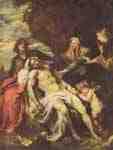 Lamentation of Christ, Anthony van Dyck
Lamentation of Christ, Anthony van Dyck
 Portrait of Marchesa Spinola Geronima, Anthony van Dyck
Portrait of Marchesa Spinola Geronima, Anthony van Dyck
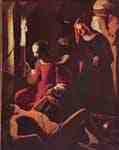
Lamentation of St. Sebastian by Irene, Georges de La Tour
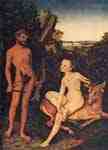
Apollo and Diana in a wooded landscape, Lucas Cranach the Elder
 Portrait of Albrecht of Brandenburg as St. Jerome, Lucas Cranach the Elder
Portrait of Albrecht of Brandenburg as St. Jerome, Lucas Cranach the Elder

David and Bathsheba, Lucas Cranach the Elder
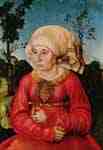 Portrait of the Wife of Dr. Johann Stephan Reuss, Lucas Cranach the Elder
Portrait of the Wife of Dr. Johann Stephan Reuss, Lucas Cranach the Elder
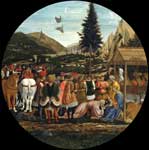
The Adoration of the Magi, Domenico Veneziano
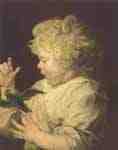 Portrait of a child with bird, Anthony van Dyck
Portrait of a child with bird, Anthony van Dyck

Holy Family with Angels, Adam Elsheimer
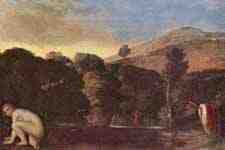
Landscape with bathing nymph, Adam Elsheimer
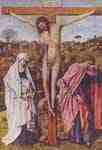
Christ on the cross between Mary and John, Jan van Eyck
 Portrait of Etienne Chevalier with St. Stephen, Jean Fouquet
Portrait of Etienne Chevalier with St. Stephen, Jean Fouquet
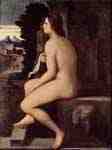 Ceres, Giorgione
Ceres, Giorgione
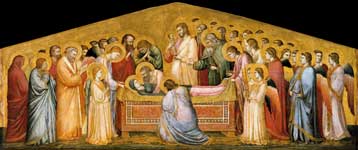
The Entombment of Mary, Giotto di Bondone
 Neptune and Amphitrite, Jan Gossaert
Neptune and Amphitrite, Jan Gossaert
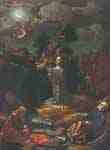
Christ on the Mount of Olives, Jan Gossaert
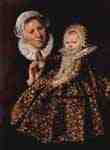
The nurse with the child, Frans Hals
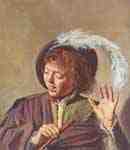 Singing Flute Player, Frans Hals
Singing Flute Player, Frans Hals
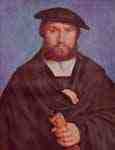 Portrait of businessman Wedigh from Cologne, Hans Holbein the younger
Portrait of businessman Wedigh from Cologne, Hans Holbein the younger
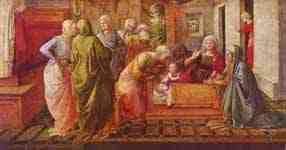
Ambrose legend, Fra Filippo Lippi

Adoration of the Child and St. Bernard, Fra Filippo Lippi
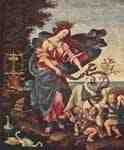
Allegory of Music, Filippino Lippi
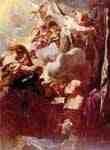 Rapture of St. Paul, Johann Liss
Rapture of St. Paul, Johann Liss

Satyr and the Peasant, Johann Liss
 Christ's Farewell to Mary, Lorenzo Lotto
Christ's Farewell to Mary, Lorenzo Lotto
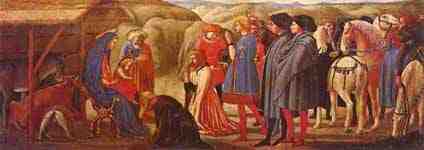
Adoration of the Magi, Masaccio
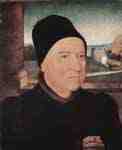 Portrait of an older man, Hans Memling
Portrait of an older man, Hans Memling
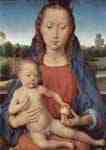 Portinari Triptych , Middle panel : Madonna, Hans Memling
Portinari Triptych , Middle panel : Madonna, Hans Memling
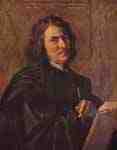 Self Portrait of the Artist, Nicolas Poussin
Self Portrait of the Artist, Nicolas Poussin
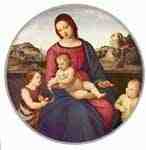 Madonna Terra Nuova, Raphael
Madonna Terra Nuova, Raphael
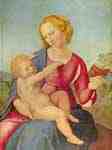
Madonna of the Colonna house, Raphael
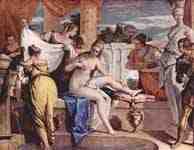 Bathsheba in her bath, Sebastiano Ricci
Bathsheba in her bath, Sebastiano Ricci
 Susanna and the Elders, Rembrandt Harmensz. van Rijn
Susanna and the Elders, Rembrandt Harmensz. van Rijn
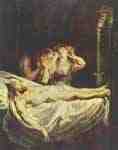
Lamentation of Christ, Peter Paul Rubens
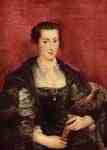 Portrait of Isabella Brant, Peter Paul Rubens
Portrait of Isabella Brant, Peter Paul Rubens
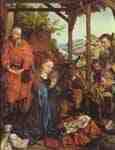
Adoration of the Shepherds, Martin Schongauer
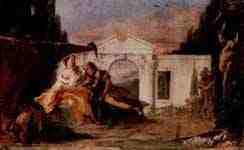 Rinaldo and Armida, Giovanni Battista Tiepolo
Rinaldo and Armida, Giovanni Battista Tiepolo
 Martyrdom of St. Agatha, Giovanni Battista Tiepolo
Martyrdom of St. Agatha, Giovanni Battista Tiepolo
 Self-portrait, Titian
Self-portrait, Titian
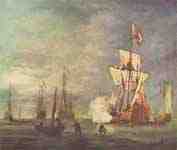
The Salut shot, Willem van de Velde the Younger

The Fire Miracle of St. Peter Martyr, Antonio Vivarini
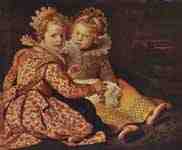
Two daughters of the painter, Cornelis de Vos
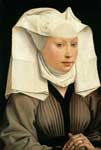
Portrait of a Woman with a Winged Bonnet, Rogier van der Weyden
Fine Art Prints | Greeting Cards | Phone Cases | Lifestyle | Face Masks | Men's , Women' Apparel | Home Decor | jigsaw puzzles | Notebooks | Tapestries | ...
The Gemäldegalerie is an art museum in Berlin, Germany, and the museum where the main selection of paintings belonging to the Berlin State Museums (Staatliche Museen zu Berlin) is displayed. It holds one of the world's leading collections of European paintings from the 13th to the 18th centuries. Its collection includes masterpieces from such artists as Albrecht Dürer, Lucas Cranach, Hans Holbein, Rogier van der Weyden, Jan van Eyck, Raphael, Botticelli, Titian, Caravaggio, Giambattista Pittoni, Peter Paul Rubens, Rembrandt, Johannes Vermeer, and Antonio Viviani. It was first opened in 1830, and the current building was completed in 1998. It is located in the Kulturforum museum district west of Potsdamer Platz.
The collection
Amor Victorious (1602–1603). Oil on canvas. 156 x 113 cm. Caravaggio shows Eros prevailing over other human endeavors: war, music, science, government.
See also: Category:Paintings in the Gemäldegalerie, Berlin
The Gemäldegalerie prides itself on its scientific methodology in collecting and displaying art. Each room can be taken in as a single statement about one to five artists in a certain period or following a certain style. The German collection is the finest and most comprehensive in the world, rivalled only by Vienna and Munich, and the Early Netherlandish and Italian collections also exceptionally comprehensive. The holdings of Spanish, French and British art are much smaller. Especially notable rooms include the octagonal Rembrandt room and a room containing five different Madonnas by Raphael.
There are two paintings by Vermeer in the collection, The Wine Glass and Woman with a Pearl Necklace.
Other notable experiences include Flemish moralistic paintings which stretch across the north side of the museum, showing an interplay between the religious motives of the artists' patrons and the often sensual inspirations of the artists. In the Renaissance section, for example, Caravaggio's Amor Victorious is displayed alongside Giovanni Baglione's Sacred Love Versus Profane Love. The two paintings are historically connected; after hearing of the scandalous portrayal of the theme "love conquers all" in Caravaggio's work, a Roman bishop commissioned Baglione's reply, which mimics Carvaggio's style, including the features of Amor.
The building
The current gallery sits in the southwest corner of the Kulturforum, a modern-styled answer to the old Museumsinsel (Museum Island). The gallery was designed by Munich architects Heinz Hilmer and Christoph Sattler. The building consists of 72 rooms providing a two-kilometer (1.25 mi) floor. Upstairs the rooms flow around a large central hall, described by the museum as a "meditation hall". The hall sometimes displays sculpture, but is mostly empty, allowing easy crossing between rooms, and somewhere for school parties to sit.[1] There are also works downstairs, a gallery devoted to frames, and a digital gallery.
The collection is arranged more or less chronologically starting from the entrance and moving toward the farthest room; however there are many doors back to the long central space, so it is straightforward to reach any other room at any point. The visitor chooses between southern, mainly Italian, art to the left, and German and Flemish art to the right. Completing the circuit takes the visitor first forward, then backward, in time. The numbering system starting on the north side of the museum covers mostly Northern European art, then British art. A visitor following along the southern side will go through mostly Italian and Southern European art. The main floor galleries contain some 850 works in 53 rooms, with around 400 more in several rooms off a corridor downstairs, which are also open to visitors. [2]
History
The March of the Silenus by Peter Paul Rubens was obtained in Warsaw in 1656 (missing since World War II).
Unlike most major national European collections (with the exception of the National Gallery, London), the Gemäldegalerie collection is not essentially formed around the former dynastic royal collection, but created by a process of acquisition by the Prussian government beginning in 1815. From the first the museum was intended to reflect the full range of European art, giving a different emphasis from that of older royal collections, including the royal collection of Saxony, now mostly in the Gemäldegalerie Alte Meister in Dresden, the finest German princely collection, which like other royal collections is strongest in Italian art.[3]
The collection was first opened to the public in 1830, on completion of construction of the Royal Museum, now called the Altes Museum ("Old Museum"), designed by Karl Friedrich Schinkel and sited by the Lustgarten opposite the Royal Palace on the other side of Unter den Linden. The paintings occupied the upper floor with the collection of antiquities on the lower. At this point the collection contained nearly 1200 paintings, with a core of 160 from the 17th century collection of Marchese Vincenzo Giustiniani, bought in Paris in 1815. An even more important purchase was 677 paintings from the collection formed in Berlin by the English merchant Edward Solly was acquired in 1821; Solly was an early collector of Italian Trecento and Quattrocento paintings and Early Netherlandish painting.[4] Purchases continued throughout the 19th century, with 345 works acquired during the inaugural directorship of Gustav Friedrich Waagen from 1830–1868, though paintings competed with antiquities for rather reduced purchasing budgets.[5]
Albrecht Dürer, Portrait of Jakob Muffel 1526, from the museum's exceptional collection of German paintings
After Berlin became the capital of the new German Empire in 1871 the funds available greatly increased, and purchases accelerated, as Berlin strove to catch up with the greatest European collections. In 1874 the collection acquired the best of the collection of mostly north European art formed by the industrialist Barthold Suermondt of Aachen after his business collapsed. This was handled for the museum by the art historian Wilhelm von Bode, who had joined in 1872, and was to be the Berlin Museums' greatest Director. He headed the sculpture collections from 1883, then the paintings from 1890, becoming general head of the Berlin Museums from 1890 to 1920. A specialist in Rembrandt and Dutch painting, he made very significant additions in those areas, but did not neglect Italian painting. His leadership marked the rise of the Gemäldegalerie to international prominence.[6]
In 1904 the Gemäldegalerie moved to the newly built Kaiser Friedrich Museum, now the Bode Museum, where the collection continued to expand. The museum was badly damaged during World War II, but most of the collection survived the war in shelters across Germany. At the end of the war, however, 400 works that were regarded as too large to take to the remoter hiding places were destroyed in a fire in a Flak tower that served as a bomb shelter. Many important altarpieces and other large works were lost, and the collection remains short of very large works compared to the other major European collections. Furthermore, several hundred paintings were looted by Russian or American soldiers or confiscated by the Red Army and never returned,[7] although in June 2006 a small painting by Alessandro Allori, missing since 1944, was returned by the British journalist Charles Wheeler, who had picked it up at the end of the war in Berlin.[8]The surviving collection was divided between East Berlin (mostly at the Bode Museum on Museumsinsel) and West Berlin in Berlin-Dahlem, where from the 1950s they were housed in a building originally used for the Asiatic collections, built in 1923, with post-war additions.[9]
Purchases for the West Berlin collection eventually resumed after the war, with Dutch Golden Age painting, Italian Baroque painting, and the creation of a small section for English painting being priorities for successive directors before the Re-unification of Germany. In 1992 the museum administrations of East and West were re-united, but uniting the collections physically took longer. The current building on the Kulturforum was completed in 1998, and displays some 1250 paintings, although yet another move currently seems likely (see below). Other works are displayed elsewhere, as the museum forms part of the Berlin State Museums and does not own a distinct collection as most museums do. For example L'Enseigne de Gersaint, or "Gersaint's Shopsign", (1720), a famous painting by Jean-Antoine Watteau, is displayed with other works in the appropriate setting of Charlottenburg Palace. The whole collection of Old Master Western paintings in the Berlin State Museums is usually said to be around 3,000.[10]
Relocation and controversy
As of 2012, the gallery's collection faces a pending move to a temporary site on Berlin's Museumsinsel, to make room for the expansion of the Neue Nationalgalerie and the 20th-century collection of Ulla and Heiner Pietzsch, bequeathed on condition that it be displayed in its entirety. The proposal has provoked controversy and criticism, particularly since there are no permanent plans for a new structure that would house the collection in its full scope.[11][12][13][14]
See also
List of art museums
List of museums in Berlin
List of museums in Germany
Notes
Prestel, 10–12
Prestel, 10–12
Prestel, 4–5
Prestel, 4–6. The King bought some 3,000 works from Solly with his own money, allowing Waagen to take his pick.
Prestel, 6–7
Prestel, 7–8
Prestel, 8–9
Harding, Luke. "Renaissance woman returned to gallery". The Guardian, 1 June 2006. Retrieved on 12 October 2007.
Prestel, 8–10
Prestel, 10–11; see 2012 press references below for the 3,000 figures.
Connolly, Kate (12 July 2012). "Berlin plan for Old Masters to give way to modern art angers historians". The Guardian. Retrieved 21 July 2012.
"Old Masters face eviction from Berlin gallery". The Guardian. 12 July 2012. Retrieved 21 July 2012.
Walde, Gabriele (6 July 2012). ""Wir lassen uns nicht auf Meisterwerke reduzieren"". Die Zeit (in German). Retrieved 21 July 2012.
Rauterberg, Hanno (9 July 2012). "Rettet die Gemäldegalerie!". Die Zeit (in German). Retrieved 21 July 2012.
References
"Prestel": Gemäldegalerie, Berlin, Prestel Museum Guide, 1998, Prestel Verlag, ISBN 3791319124
External links
Staatliche Museen zu Berlin | Gemäldegalerie
Kaiser-Friedrich-Museums-Verein Association of the friends of the Gemäldegalerie
www.kulturforum-berlin.com Information about all cultural institutions at the "Kulturforum" in Berlin
----
Fine Art Prints | Greeting Cards | Phone Cases | Lifestyle | Face Masks | Men's , Women' Apparel | Home Decor | jigsaw puzzles | Notebooks | Tapestries | ...
----
Artist
A - B - C - D - E - F - G - H - I - J - K - L - M -
N - O - P - Q - R - S - T - U - V - W - X - Y - Z
Retrieved from "http://en.wikipedia.org/"
All text is available under the terms of the GNU Free Documentation License



